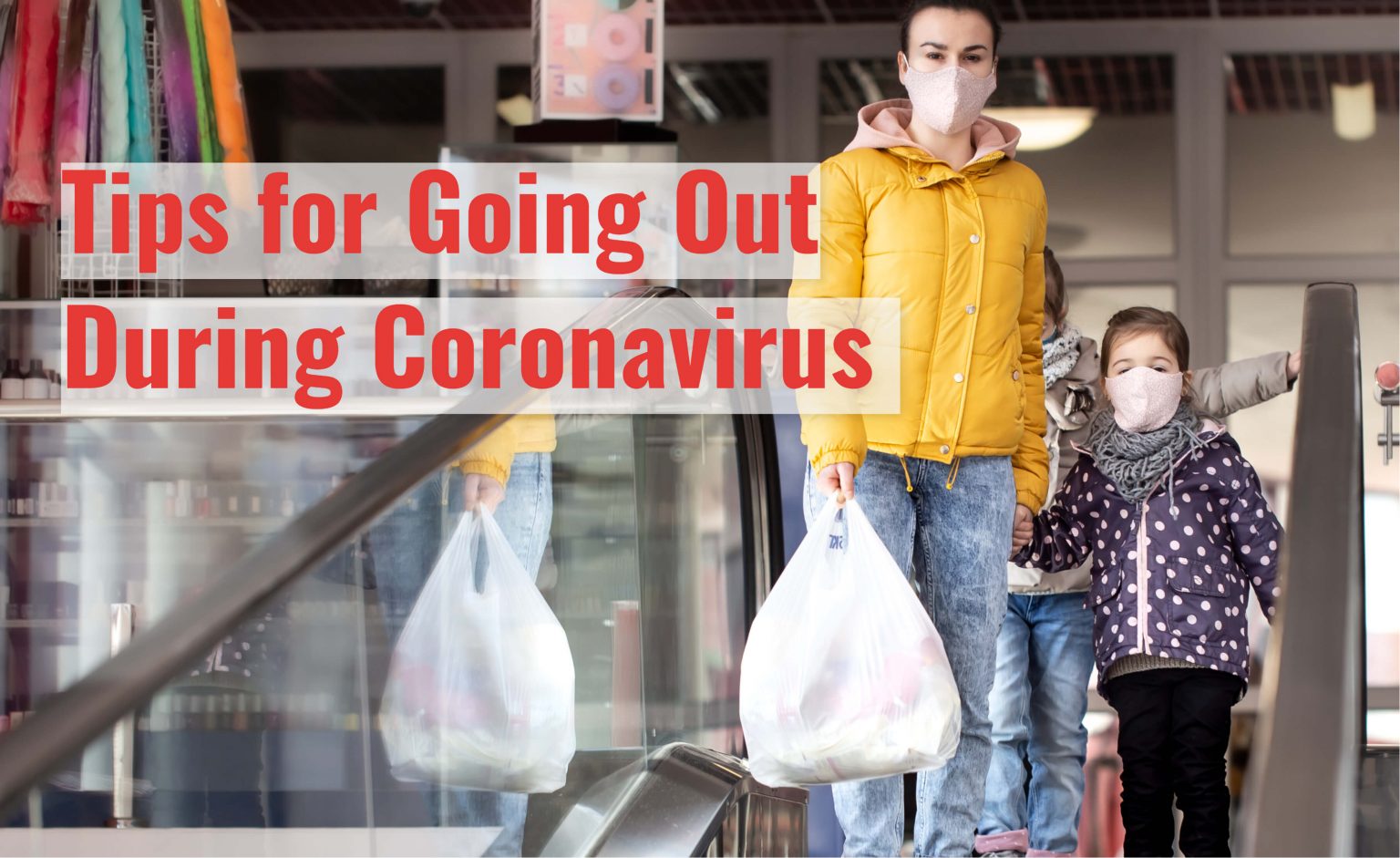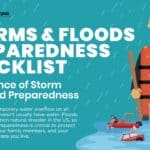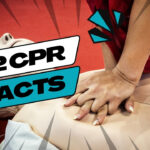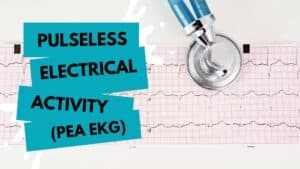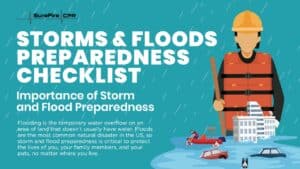While nearly all states in the union are under an official “shelter in place” order due to the spread of COVID-19, most residents still need to leave their houses every so often. Grocery shopping, doctor’s visits, and the occasional walk around the neighborhood are some of the outings that will still take place during this time of quarantine. However, each of these outings warrants extra precautions. If you’re going out, you need to be prepared. In this guide, we cover 5 tips to help you stay safe while on the go during COVID-19. Use these safety tips when grocery shopping, picking up essentials at other stores, or even going out for a walk around the neighborhood.
1. Observe Social Distancing Where Possible
When interacting with people outside of your home, “social distancing” is the name of the game. This practice involves keeping a safe distance of 2 meters (6 feet) from anyone around you, per CDC guidelines. The CDC also suggests not gathering in large groups and staying out of any place that might be crowded. In response to these guidelines, many places of business that have to remain open — such as grocery stores, doctor’s offices, autobody shops, and certain other retail locations — have implemented queues to allow only a few people into a property at once.
Even with queues in place, it’s still important to observe social distancing both inside the store and outside of it. It may not be easy, or efficient, but try to structure your shopping around the positions of other people. If someone is standing near a shelf that you’re trying to access, wait and go to another area of the store. At checkout, keep a safe distance between others in line.
2. Where the Necessary PPE (Personal Protective Equipment)
While social distancing is important, it’s sometimes impossible to perfectly execute. If you’re leaving your house, there will likely be moments when you will come closer than six feet away from another person. At the grocery store, you have to interact with the cashier. On walks and runs, you may pass another person on a path. Even in your own home, you may need to accept a delivery from another person. For these close encounters, it’s important to wear one or several pieces of personal protective equipment (PPE).
PPE is comprised of gear like gloves, masks, gowns, and goggles. Each of these pieces of equipment serves as a protective barrier between your body and pathogens like COVID-19 (also called “coronavirus”), which can spread through sneezes, coughs, or simple physical one’s own eyes, mouth, or nose after touching a surface touched by an infected individual. Though each piece of PPE is important, not all pieces are necessary for most errands. Gloves, goggles, and gowns only need to be worn in and around confirmed COVID-19 patients in close quarters. They should be reserved for medical professionals and other caretakers.
One piece of PPE that should never be skipped is the mask. As modes of transmission for coronavirus are becoming better known — and the rampant presence of asymptomatic carriers has become apparent — the CDC now recommends the use of cloth face masks outside of the home. It’s important to note that the masks recommend by the CDC need only cover the mouth and the nose and do not need to have the filtration capabilities of surgical masks or N-95 respirators. As medical supplies are currently scarce across the country, these more advanced masks should be saved for medical professionals in high-risk areas. For all other individuals, cloth masks will provide ample protection against the COVID-19 virus in public settings. If you’ve asked yourself — “Should I wear a mask to the grocery store?” — the short and sweet answer is “yes.” Visit the link above to learn how to make your own cloth mask.
Interested in getting more information on PPE, how to put it on, and how to take it off? Our emergency response experts here at SureFire CPR have put together an informative PPE guide on these subjects and more. Check it out to ensure that you’re staying safe and using your PPE properly.
4. Watch What You Touch (In the Store and In the House)
While people are the primary carriers of COVID-19, they aren’t the only threats to watch out for when you’re out of your house. As we mentioned above, it’s possible to contract coronavirus by touching a surface recently touched by an infected individual and then touching one’s own mouth, eyes, or nose. Refraining from any physical contact with your own face is a great way to prevent this from happening — but sometimes, it’s easier said than done. To stop the spread of the virus at the source, try your best to refrain from touching items you’re not going to purchase or use. At the grocery store, don’t pick things up and put them pack down. Also try to refrain from placing your own belongings on foreign surfaces like tables and counters at checkout.
For the items you do end up buying, try to disinfect their packaging as much as possible with disinfecting wipes, cleaning sprays, or just soap and water. You’ll also want to wipe down any surfaces you set them on for preliminary cleaning in your house. That way, you can cover your coronavirus tracks after returning from your errands. One surface to wipe down daily? Your phone. It goes where you go, and it touches your hands virtually every hour of the day. Keep it clean to keep the risk of contracting or spreading COVID-19 as low as possible.
5. Always Wash Your Hands
Washing your new items and other belongings is important, but what’s even more important is washing your own hands. Every time your leave the house, your hands come into contact with foreign surfaces — doorknobs, groceries, payment interfaces, bags, and more — that may have been touched by other people. Though you may be trying to refrain from touching your face, all it takes is one moment of forgetfulness to bring a contaminated hand into close contact with high-risk areas like your mouth, nose, or eyes. Even if you do manage to not touch your own face, you may touch other items in your home and spread the virus that way.
So, what’s the solution? You guessed it: wash your hands. After coming into contact with foreign objects, washing your hands can keep you from spreading contaminants to yourself or those around you. We recommend washing them the moment you get home after errands — or if, you can, the moment you leave a store and again at home. Easy enough, right? Not so fast. While you may consider yourself a capable hand-washer, you may be mistaken. Many people neglect to wash their hands thoroughly enough to remove harmful substances like bacteria, viruses, and other contaminants. Here are the CDC guidelines for doing it right:
- Wet your hands. Run your hands under clean water (cold or warm) until they are wet on all sides.
- Lather your hands with soap. Lather all surfaces of your hands with soap by rubbing them together.
- Scrub for at least 20 seconds. This is the step many people get wrong. While not exactly a lifetime, 20 seconds is longer than you think. (For those that don’t want to count: it’s two renditions of “Happy Birthday,” back to back.) During that time, make sure to scrub all surfaces — including the backs or your palms and the tips of your finger in and underneath your fingernails.
- Rinse your hands thoroughly. After 20 seconds, place your hands back under the water to thoroughly rinse away the soap and grime.
- Dry your hands with a clean towel. Don’t let all of that hard work go to waste by drying your hands with a dirty towel. Get a clean one to preserve the cleanliness on your palms and beyond. If you’re in a public bathroom, use your elbows to dispense a paper towel or turn on an automatic hand dryer.
- If You Can, Stay Home
Our final safety tip for going out during coronavirus is the most effective of them all. To stay safe, don’t go out at all. While it may seem impossible at first thought, staying home nowadays is easier than it’s ever been. You can order groceries, exercise with apps in your living room or backyard, and even hang out with friends via your smartphone or laptop. These practices and more can help eliminate the need for even the best-planned errands, all of which can increase your risk of contracting COVID-19. When it comes to stopping the spread of this deadly disease, staying home whenever possible is the way to go.
Learn More and Stay Updated on COVID-19 Here
Want more safety tips on leaving your home during the coronavirus? Searching for updates on all things COVID-19? Check our homepage here at SureFire CPR regularly for the latest news developments, safety briefings, and more — and contact our team to have your question answered directly.

